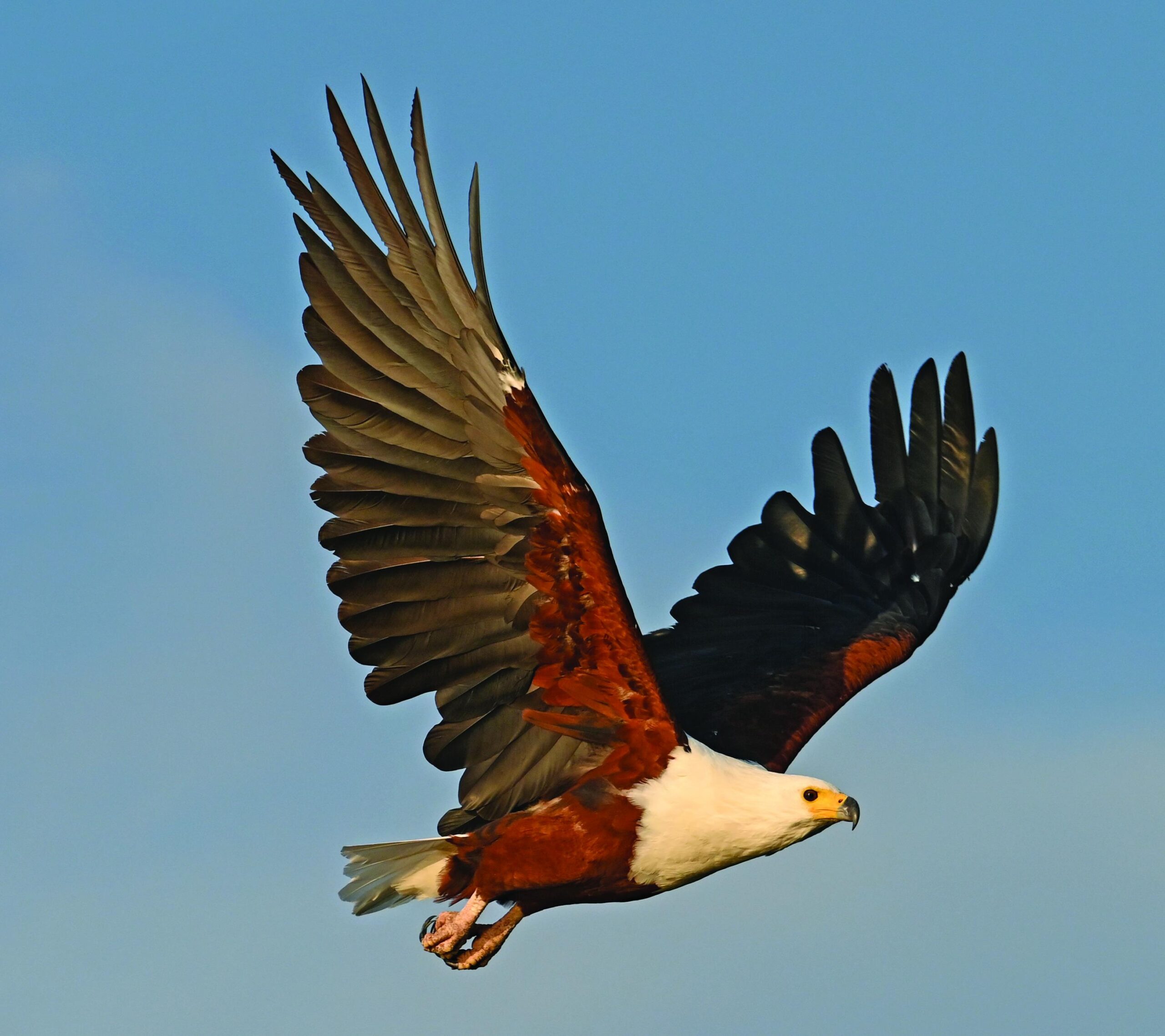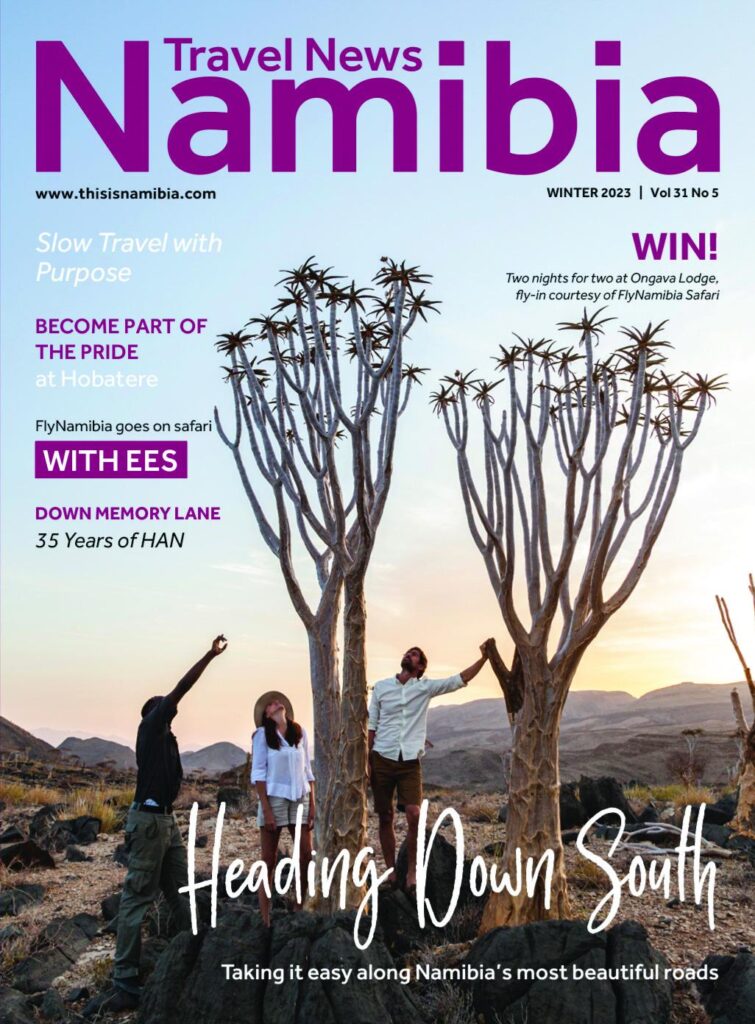

Three wise men
from the west
Did they bring any presents? Yes, they did. Are they wise? Indeed they are. Are they windgat? No. Are they your typical bird watchers/guides? Not at all. Do they know everything about birds? No, they know everything about nature, be it birds, bees, flowers, trees, butterflies, reptiles. They do not know that much about rugby, but that makes it so much easier to explain the finer points of the Blue Bulls, not to be corrected by wise-guy Stormer supporters. These are probably all the reasonable nice things I can say about these fellows.
Text Pompie Burger | Photographs Pompie Burger
From the Winter 2023 issue
Maybe I should start at the beginning. I am not a birdwatcher. Rather a bird lover, and if all else fails you can call me someone who loves taking pictures of birds. Calling me a bird photographer might be a bit rash. Having said that, the wise men can getuig (testify) that I am way below par as far as identifying birds is concerned. All the emails with libraries full of good and not so good pictures of birds that need to be identified. Some even more than once because my memory is not that dazzling and my technical adequacy leaves much to be desired. So a lot of the bird pictures that were identified by the wise men got lost in translation more than once between Swakopmund and Borcher Street.
First and foremost it is actually three wise men and a woman, because Louise does bring so much needed sanity in the family. I have known Steven for many years, since his Hobatere days. Ever since we have been on only one trip together, the Antarctic. Apart from that we have been drinking wine, eating some wonderful meals and discussing long stories about the wonderful things we have achieved in our lifetime – which means we have mainly been drinking and eating. My first trip in Namibia with him and his sons was during the December holiday 2022. We had a very good excuse to do this because we are in the process of constructing, designing, and hopefully completing a field guide of birds in Namibia.
Finally getting to the point of birdwatching taken to the next level was my privilege. What better place to do it than the Zambezi Region. Maybe I shall not bother you with the finer details of where we went or what wine was consumed. If you want to get to the next level you need all your senses, and maybe a bit more. Having a camera, bird book and a vehicle is not enough. My guides for this trip taught me how to use all your senses.
Starting with hearing or listening, I can quite easily identify an African Fish Eagle call, on second thought maybe also a Go-away-bird. Realising that one can go a long way by identifying a bird if you can recognise its call, the next step is to broaden your array of calls. Being technically handicapped, I must confess that one of the wise men is not much better than me. Me venturing into the world of calling birds via technology was always a bit scary for me. It did look and sound very attractive, sorry for the pun. I thought that if you call a bird, it will come flying with the speed of lightning towards you, sitting on the ideal spot to be photographed – meaning close, open, sun from the side and no twigs or branches in between. Not true!
There are a few problems with calling birds. First you need to know where to call which birds. No use calling a Dune Lark when sitting at the Zambezi River. Next problem, if you hear a bird calling and you want it to come into sight or show its face you need to know where to look in your Tamagotchi for the correct bird to call. No use if an Eastern Nicator is calling nearby and you play the call of a Green-capped Eremomela for him. Although, if you wanted to see this Eremomela it might pitch up as a second best if you are lucky.
Seeing is believing. My philosophy has been that I have not seen a bird of which I could not get a proper picture. This poses a few problems. The wise men can see birds a few kilometres away – to me looking like a dirt spot on my camera. And they will start discussing them in a nonchalant way: “Oh, it is a sub-adult female Ayres’s Hawk-Eagle, might have a bit of abnormal barred window in its left underwing, or it can also be a pale morph.” Having to follow the leader with my 100 kg equipment is difficult, sweating profusely, but Africa is a tough country.
Touching, yes indeed. Having been an avid bird ringer in his day, Steven can tell you how the sensation of touching a Black- crowned Tchagra is very different from the Brown-crowned Tchagra. One bird in the hand is indeed worth more than two in the bush.
Smelling and tasting – this one you can skip. Although Steven got a sniff of a Leaflove at our camp, and voila, there they were waiting for us. So I had the opportunity to see a bird that I did not even know exists!
Brains. If your surname is Braine you have a bit of an advantage above your fellow birders, especially if you happen to be a Burger. You need to be able to put all these senses together and make sense of what you have and what you’ve got. Being a birder since he was four years old, Steven does have a bit of experience to add to all these senses. The sad thing is that his two sons Sean and Dayne, the other two wise men, are even better, but they had the advantage of a pretty good teacher.
When Helga, Karlien and myself joined them, there was at least a balance of identity and skills. The three wise men and the three stooges. TNN






